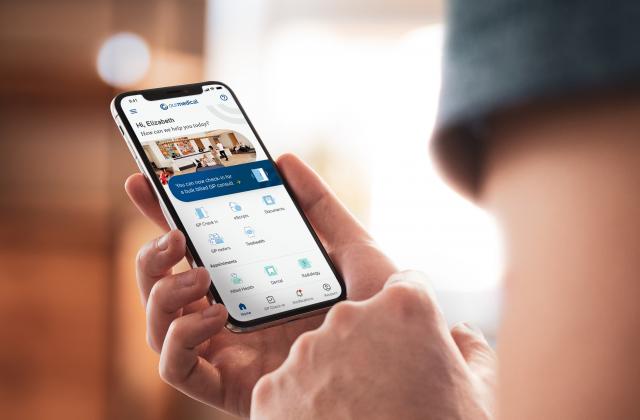As Agra’s population continues to grow, the demand for efficient and accessible healthcare services is more critical than ever. Building a healthcare app tailored to the needs of Agra’s residents can significantly improve healthcare delivery, empower patients, and streamline processes for healthcare providers. Here’s a comprehensive guide on how to build a healthcare app for Agra’s growing population.

Table of Contents
Toggle1. Identify the Target Audience and Needs
Before diving into development, it’s crucial to understand the specific needs of Agra’s population. Consider the following:
- Demographics: Identify key demographics, such as age groups, common health concerns, and tech-savviness.
- Healthcare Access: Assess the current healthcare infrastructure in Agra. Are there barriers to accessing care? Are telemedicine services needed?
- User Feedback: Conduct surveys or focus groups to gather insights from potential users about their healthcare needs and preferences.
2. Define Core Features
Once you’ve identified the target audience and their needs, outline the core features of the app. Some essential functionalities to consider include:
- User Profiles: Allow users to create and manage profiles with personal health information, including medical history, allergies, and medications.
- Appointment Scheduling: Enable users to book, reschedule, or cancel appointments with healthcare providers directly through the app.
- Telemedicine Services: Offer video consultations for users who prefer remote healthcare options or have difficulty traveling to clinics.
- Medication Reminders: Implement a feature that reminds users to take their medications and refill prescriptions.
- Health Tracking: Allow users to track vital signs, symptoms, or other health metrics, providing valuable data for both patients and providers.
- Emergency Services: Include quick access to emergency contact numbers and nearby hospitals or clinics.
3. Choose the Right Technology Stack
Selecting the right technology stack is essential for the app’s performance and scalability. Consider the following components:
- Frontend Development: Choose frameworks such as React Native or Flutter for cross-platform compatibility (iOS and Android).
- Backend Development: Use robust backend technologies like Node.js, Python, or Ruby on Rails to handle user data securely.
- Database Management: Opt for databases like Firebase or MongoDB that can efficiently manage user data and ensure real-time updates.
- Security Protocols: Prioritize security features, such as data encryption and secure user authentication, to protect sensitive health information.
4. Design an Intuitive User Interface (UI)
An intuitive and user-friendly UI is crucial for user engagement and satisfaction. Consider these design principles:
- Simplicity: Use clear navigation and minimize clutter to make the app easy to use, especially for less tech-savvy users.
- Accessibility: Ensure the app is accessible to all users, including those with disabilities. Consider font size, color contrast, and voice commands.
- Visual Appeal: Incorporate a clean and appealing design that reflects the healthcare theme while maintaining a professional look.
5. Integrate Healthcare Regulations and Compliance
Healthcare apps must adhere to various regulations to ensure user safety and data privacy. Familiarize yourself with the following:
- HIPAA Compliance: If your app collects health information in the U.S., ensure it complies with HIPAA regulations to protect user data.
- Local Regulations: Research local healthcare regulations in India to ensure the app meets necessary compliance standards.
- Data Protection: Implement measures to protect user data, including data encryption and secure data storage solutions.
6. Testing and Quality Assurance
Thorough testing is essential to ensure the app’s functionality and reliability. Conduct the following tests:
- Functional Testing: Test all features to ensure they work as intended.
- Usability Testing: Gather feedback from real users to identify areas for improvement in user experience.
- Performance Testing: Assess the app’s performance under various conditions to ensure it can handle high traffic and data loads.
7. Launch and Promote the App
Once the app is thoroughly tested, it’s time to launch and promote it effectively:
- App Store Optimization (ASO): Optimize the app’s listing on Google Play and the Apple App Store to improve visibility.
- Social Media Marketing: Utilize social media platforms to create awareness and engage potential users.
- Partnerships: Collaborate with local healthcare providers and organizations to promote the app and establish credibility.
8. Gather Feedback and Iterate
After launch, continue to gather feedback from users to identify areas for improvement. Regular updates and feature enhancements can help maintain user engagement and satisfaction.
Conclusion
Building a healthcare app for Agra’s growing population presents a significant opportunity to enhance healthcare delivery and improve patient outcomes. By understanding the needs of the community, integrating essential features, and ensuring compliance with regulations, developers can create a valuable tool that benefits both patients and healthcare providers. With thoughtful design and ongoing support, this app can become a vital resource for the people of Agra.


No responses yet